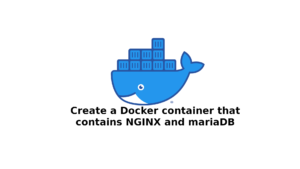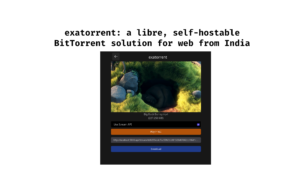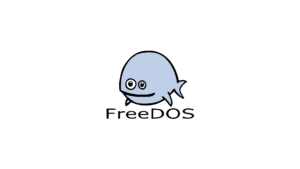Today, among the most significant web development tools are container orchestration tools, with a number of strong solutions vying for market supremacy. Developers are taking notice of Podman, a Red Hat solution that uses a Kubernetes-like technique to build, run, and manage containers, as a viable alternative to the market leaders.
We will contrast Podman and Docker, two technologies that are fundamentally different yet are also ideal for collaborating, as they have been the industry standard containerization tools for almost a decade.
What’s a Container?
A container is a small, isolated, executable software package that encapsulates an application and all of its dependencies, enabling consistent operation of the application across various computing environments. Applications can be packaged and deployed using containers, which ensures that they function properly on a variety of platforms, infrastructure, and operating systems.
A container is essentially a virtual machine without the requirement for a separate operating system. Containers use the host operating system’s kernel to isolate the application’s processes, file systems, and network resources rather than virtualizing the complete system. Applications can thus operate in a controlled setting with consistent behavior and mobility across many computing environments.
Some of the most popular container orchestration technologies are Docker, Docker Swarm, Kubernetes, and Nomad.
About Docker

Docker is an open-source platform that simplifies the creation, deployment, and management of containers. It offers a full suite of tools and services for creating, shipping, and running applications in containers. The Docker daemon manages container activities in the background using a client-server architecture, and users can communicate with the daemon via the Docker CLI. The fundamental elements introduced by Docker make container management effective and user-friendly. Building, executing, and dispersing containers are done by the Docker Engine, also known as the Docker daemon. To create secure and separated environments, it makes use of containerization technologies like namespaces, control groups, and file system separation.
Docker images serve as the building blocks for containers. A read-only template called an image contains all of the code, runtime, system tools, and libraries required to run an application. Dockerfiles, which specify how to build the image layer by layer, are used to produce Docker images. Docker registries allow for the sharing and distribution of these images, with Docker Hub being the most extensively used registry.
Users may efficiently create, deploy, and manage containers with Docker. Container networking, volume management, Docker Swarm container orchestration, and connection with well-known orchestration platforms like Kubernetes are just a few of the many tools and features that Docker offers.
About Podman

Podman is a free and open-source container management application that allows users to create, manage, and operate containers. It is a component of the Open Container Initiative (OCI), a bigger container ecosystem. For administering containerized applications, Podman offers an alternative to Docker by providing a command-line interface (CLI) and APIs. It is the default container engine in RedHat 8 and CentOS 8, and is advertised as a user-friendly container orchestrator created by Red Hat.
It is one of several command-line programs that can function as a modular framework and are meant to handle various containerization process duties. This set contains:
Podman – pods and container image manger
Buildah – a container builder
Skopeo – a container image inspection manager
runc – container runner and feature builder to podman and buildah
crun – optional runtime that allows greater flexibility, control, and security for rootless containers
These tools make it simple to switch to Podman or use it with an existing Docker installation. They also work with any OCI-compatible container engine, such as Docker.
Podman adopts a daemonless strategy in contrast to Docker, which employs a client-server architecture with a central daemon process. It does away with the requirement for a central daemon by running containers as ordinary processes. The lightweight and secure nature of Podman is a result of this design decision.
Key Differences
Image Management
Podman and Docker both support the use of container images. Due to its age, Docker has a more developed ecosystem for image management. The standard registry for sharing and accessing container images is Docker Hub, which offers a significant selection of pre-built images. Using Dockerfiles and layered image architectures, Docker’s robust build system enables users to produce customized images.
The Open Container Initiative (OCI) standards are used by Podman, in contrast, to ensure image compatibility. From Docker Hub or other OCI-compliant registries, it can directly pull images. Podman places a strong emphasis on compatibility with Docker, allowing users to migrate between the two platforms without having to make any changes to their current Docker files or images.
Container Orchestration
Although container management is the main focus of both Podman and Docker, the latter places a stronger emphasis on container orchestration thanks to its Docker Swarm mode and interaction with Kubernetes. A cluster of Docker hosts can be set up using Docker Swarm, which also offers tools for service discovery, load balancing, and container scaling. Additionally, Kubernetes may employ Docker as a runtime, enhancing its orchestration capabilities.
Contrarily, Podman lacks integrated support for container orchestration and is primarily intended for single-host container administration. However, users may combine the power of Podman’s lightweight container runtime with Kubernetes’ extensive orchestration features thanks to Podman’s ability to interact with third-party orchestration solutions like Kubernetes.
Architecture and Approach
Docker, which was introduced in 2013, employs a client-server architecture in which the Docker daemon operates in the background and manages all container-related actions. To carry out various container actions, the Docker CLI (Command Line Interface) connects with the daemon. Additionally, Docker depends on Docker Hub, a centralized image registry that makes it easier to share and distribute container images.
However, Podman, which was unveiled in 2017, adopts a different strategy. There is no central daemon process required because it adheres to a daemonless design. Instead, Podman uses a single procedure for each container, which makes it lighter and more secure. This approach works nicely with existing container tools and workflows and enables users to operate containers as regular processes.
Rootless Containers
Running containers as non-root users is one of Podman’s major advantages over Docker. While most commands in Docker must be executed as root, Podman enables users to operate containers as regular users without jeopardizing security. Due of this capability, Podman is a desirable option in circumstances when running containers as non-root is necessary, such as in multi-tenant situations or when working with untrusted container images.
Networking and Isolation
Podman and Docker both support the use of container images. Due to its age, Docker has a more developed ecosystem for image management. The standard registry for sharing and accessing container images is Docker Hub, which offers a significant selection of pre-built images. Using Dockerfiles and layered image architectures, Docker’s robust build system enables users to produce customized images.
In contrast, Podman uses the Open Container Initiative (OCI) standards to ensure image compatibility. From Docker Hub or other OCI-compliant registries, it can directly pull images. Podman places a strong emphasis on compatibility with Docker, allowing users to migrate between the two platforms without having to make any changes to their current Dockerfiles or images.
Conclusion
In summary, both Podman and Docker are effective container management systems with unique advantages and disadvantages. Through Docker Swarm and Kubernetes, Docker delivers a developed ecosystem, powerful image management tools, and integrated container orchestration. As opposed to this, Podman offers a lightweight design, support for rootless containers, improved networking, and seamless Docker compatibility.
Your specific needs and preferences will determine which of Podman and Docker you use. Podman might be the best option if your priorities include rootless container support, streamlined networking setups, and compliance with Docker workflows. However, Docker is probably a better option if you require a complete container management platform with a vibrant community and integrated orchestration tools.
In the end, understanding the distinctions between Podman and Docker gives you the power to make a wise choice, assuring efficient and effective containerization for your projects.






